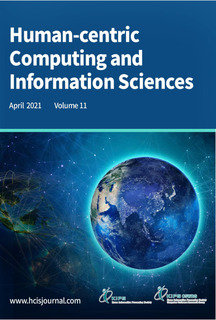| dc.rights.license | Attribution-NonCommercial 4.0 International | * |
| dc.contributor.author | VALENCIA PARAFITA, XABIER | |
| dc.contributor.other | Yera, Ainhoa | |
| dc.contributor.other | Perona, Iñigo | |
| dc.contributor.other | Arbelaitz Gallego, Olatz | |
| dc.contributor.other | Muguerza Rivero, Javier | |
| dc.contributor.other | Pérez López, Juan Eduardo | |
| dc.date.accessioned | 2021-04-27T10:48:40Z | |
| dc.date.available | 2021-04-27T10:48:40Z | |
| dc.date.issued | 2021 | |
| dc.identifier.issn | 2192-1962 | en |
| dc.identifier.other | https://katalogoa.mondragon.edu/janium-bin/janium_login_opac.pl?find&ficha_no=163367 | en |
| dc.identifier.uri | https://hdl.handle.net/20.500.11984/5281 | |
| dc.description.abstract | The current importance of digital competence makes it essential to enable people with disabilities to use digital devices and applications and to automatically adapt site interactions to their needs. Although most of the current adaptable solutions make use of predefined user profiles, automatic detection of user abilities and disabilities is the foundation for building adaptive systems. This work contributes to diminishing the digital divide for people with disabilities by detecting the web navigation problems of users with physical disabilities based on a two-step strategy. The system is based on web user interaction data collected by the RemoTest platform and a complete data mining process applied to the data. First, the device used for interaction is recognized, and then, the problems the user may be having while interacting with the computer are detected. Identification of the device being used and the problems being encountered will allow the most adequate adaptation to be deployed and thus make the navigation more accessible. | en |
| dc.language.iso | eng | en |
| dc.publisher | Korea Information Processing Society-Computer Software Research Group | en |
| dc.rights | © 2021 The authors | en |
| dc.rights.uri | http://creativecommons.org/licenses/by-nc/4.0/ | * |
| dc.subject | Accesibility | en |
| dc.subject | Adaptive Systems | en |
| dc.subject | Web Mining | en |
| dc.subject | Machine learning | en |
| dc.title | Automatic Web Navigation Problem Detection Based on Client-Side Interaction Data | en |
| dcterms.accessRights | http://purl.org/coar/access_right/c_abf2 | en |
| dcterms.source | Human-centric Computing and Information Sciences | en |
| local.contributor.group | Ingeniería del software y sistemas | es |
| local.description.peerreviewed | true | en |
| local.identifier.doi | https://doi.org/10.22967/HCIS.2021.11.017 | en |
| local.rights.publicationfee | APC | en |
| local.contributor.otherinstitution | UPV/EHU | es |
| local.source.details | Vol. 11. N. 17, 2021 | en |
| oaire.format.mimetype | application/pdf | |
| oaire.file | $DSPACE\assetstore | |
| oaire.resourceType | http://purl.org/coar/resource_type/c_6501 | en |
| oaire.version | http://purl.org/coar/version/c_970fb48d4fbd8a85 | en |








